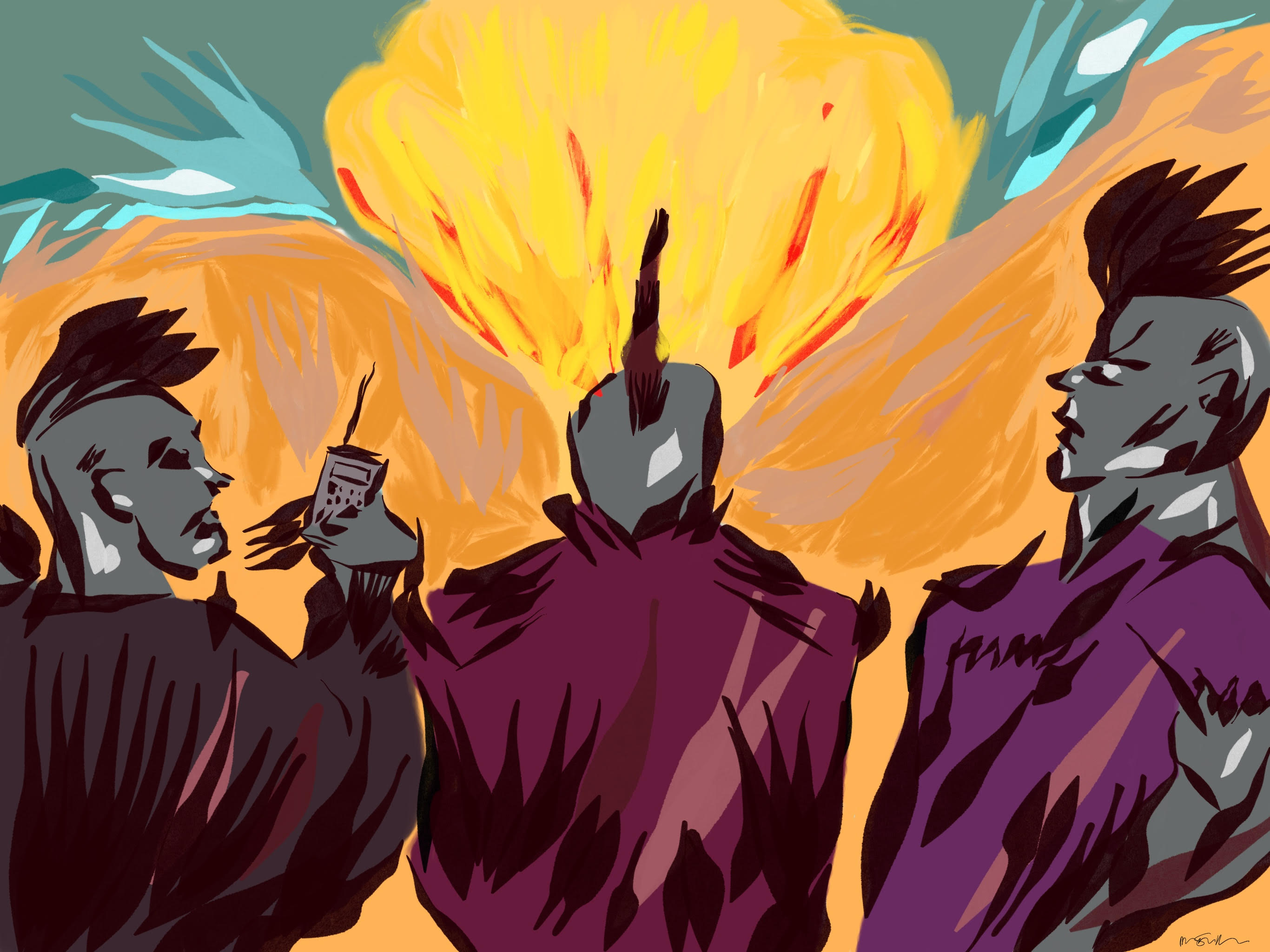To the untrained eye, it might look as though Desolation Center was just an excuse for a hodgepodge of teenaged punks to get high in the desert, make noise, and blow things up–and a small part of it was.
Despite its relative obscurity in the pantheon of music history, the short series of desert concerts dubbed Desolation Center left its mark on punk culture and festival fever with a verve that still echoes today, setting the stage (so to speak) for festival giants such as Coachella, Lollapalooza, and Burning Man.
It’s this collective anarchic revelation that new indie documentary Desolation Center seeks to explain, explore, and celebrate in equal parts.
The film takes us back to the mid-1980s, when Reaganomics ruled pocketbooks and police raids at punk bars were par for the course.
Try as they might, overzealous policing didn’t stamp out the sparks of the leather-clad, hair-dyed firestorm: instead, it pushed it underground, where bands were rocking harder than ever before.
Some of the fresh acts on the burgeoning L.A. scene included the Minutemen, Sonic Youth, and the Meat Puppets. Using the guidebook laid out for them by 1970s proto-punk, these bands pushed boundaries by infusing elements of jazz, funk, and their own existential dread into fast, furious, and short songs.
Now, the disciples of Californian hardcore needed a place to set their music free, preferably one where they wouldn’t be under constant threat of a law smackdown.
It was Stuart Swezey, a then 21-year-old college dropout, who came up with Desolation Center, a series of roaming concerts in the desert, off the beaten path. Yellow school buses drove bands and fans miles into the Mojave where they were to put on epic concerts–without permits, the most punk act of all.
Yet, just as quickly as these concerts struck, they receded after two shows, slinking into the shadows and becoming the stuff of melodic myth.
Using archival footage and interviews with punks and musicians alike (including members of some of the aforementioned bands), writer/producer/director Swezey weaves together this tale of anarchy and musical revolution.
The little-known story behind this little-known doc is incredible. If you’re a punk fanatic, a festival junkie, or just have a passing interest in music history, this spunky flick will certainly be one to file away for the “to-watch” list. The previously unseen footage is a treat for those who speak the language of rock: the desert environment, the overt anti-establishment cries, and rogue hardcore teens all coalescing into a tapestry of angry anticipation.
Punctuating this trifecta is, of course, the music itself. Viewers are sucked into the performance clips, watching as D. Boon of the Minutemen or Kim Gordon of Sonic Youth lay it bare on the sand. A particularly brilliant show comes from footage of German band Einstürzende Neubauten–or in English, Collapsing New Buildings–as they use rocks and power tools to create a rich soundscape of noise. It’s sure to enrapture audiences, or at the very least, capture their curiosity and/or confusion.
If there’s anything that loses those watching, it’s Swezey himself. As the writer and director of the film, he sometimes gets lost in his self-revelry, turning the camera more towards his own journey rather than the journey of these punk caravans. Sure, Swezey might be compelling as a character, but the audience is less interested (and rightfully so) in the nitty-gritty of his involvement than in the musical explosion itself.
Though it stumbles through some irrelevant narrative arcs at times, it’s the subject matter of Desolation Center that manages to keep it fresh and fascinating. In-keeping with the guerilla concerts it documents, it has bounced around, travelling from festivals to independent movie theatres with little promotion. It’s almost as if the film has become an extension of the Desolation philosophy that brought hundreds into the desert nearly forty years ago.
Either way, you don’t need to have a lot of money or planning to make music history. All you need is a leather jacket, a badass attitude, and a thirst for living life on the edge, guitar pick in hand.
Featured graphic by Farhan Tasin.






